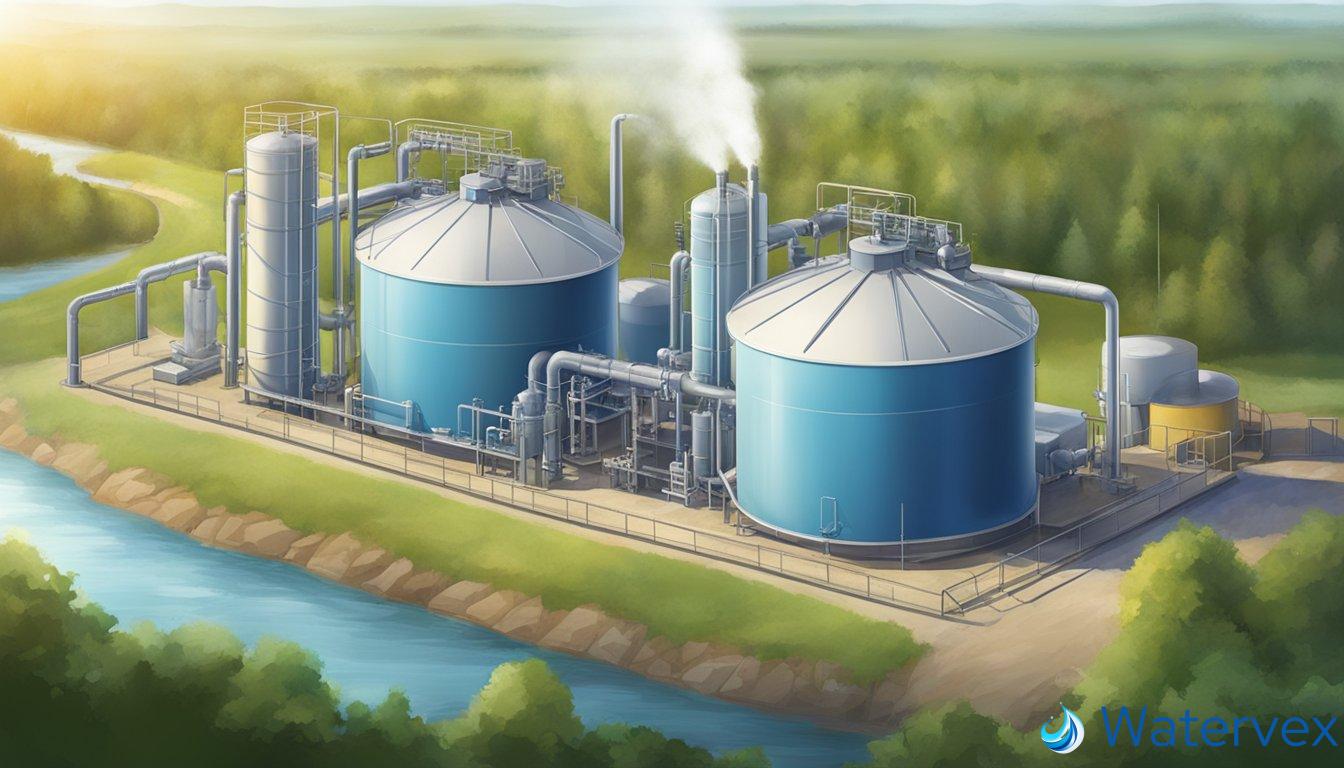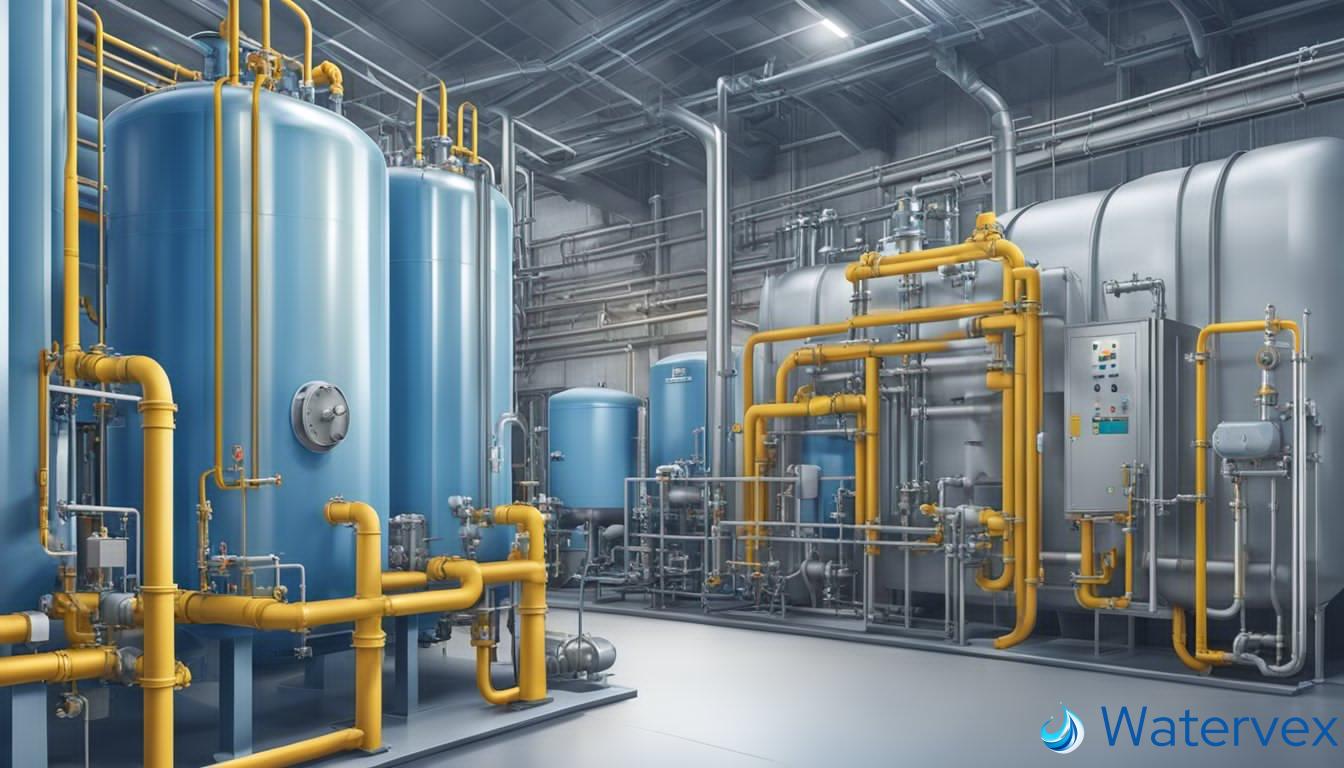When you turn on your tap at home, you expect safe and clean water. However, the presence of ammonia in water can compromise both its quality and safety. Ammonia removal from water sources is a critical step in ensuring the water you drink is free of harmful contaminants. Typically originating from agricultural runoff, industrial waste, or sanitation processes, this nitrogen-based compound can pose serious health risks if not properly removed during water treatment.

Technology and water research have paved the way for advanced solutions in removing ammonia from drinking water sources. These methods can be biological, chemical, or physical, each with its specific applications and efficiencies. Strategies vary depending on the ammonia levels and the composition of the water being treated. Drinking water treatment facilities use a combination of these techniques to meet the stringent regulations for safe drinking water.
Key Takeaways
- Safe drinking water requires effective ammonia removal.
- Advanced technologies are employed for ammonia extraction.
- Water conditioners play a role in ammonia elimination.
Why Is Ammonia Removal Crucial for Safe Water at Home?
Ammonia removal is central to ensuring safe drinking water for your family both from a health and environmental perspective.
Impact on Health and Environment
Exposure to high levels of ammonia in water can be harmful to both your health and the ecosystem. In humans, consuming water with elevated ammonia levels might lead to effects on the liver, kidneys, or central nervous system and can cause skin irritation or eye damage. In the environment, ammonia can disrupt aquatic life, leading to oxygen-depleted zones which are perilous for fish and other underwater species. Ammonia can also act as a fertilizer in water bodies, causing eutrophication which severely affects water quality and biodiversity.
Regulations and Recommended Levels
The presence and concentration of ammonia in your tap water are regulated by specific guidelines. These regulations, set by agencies such as the Environmental Protection Agency (EPA), exist to maintain the stability of water quality by ensuring that ammonia levels are below those that are known to cause harm. Recommended levels are generally low to prevent toxic effects on animals and potentially harmful interactions with other chemicals found in water. It is important for water treatment processes to remove ammonia effectively to meet these standards and to safeguard your family’s health and wellbeing.
By addressing ammonia in water treatment, you mitigate risks to your family and the environment, aligning with recommended regulatory standards for a safe home environment.
Most Effective Methods for Extracting Ammonia

To ensure your water is safe and clean, mastering the effective methods for ammonia removal is crucial. These refined techniques tackle ammonia at the molecular level, providing you with a healthier home environment.
Chemical Treatments
Chemical treatment methods involve introducing substances that react with ammonia to form harmless compounds. One notable method is the adsorption process, where activated carbon, or GAC (Granular Activated Carbon), is used. Ammonia attaches to the carbon surface effectively reducing its levels in the water. In another approach, chlorine can be utilized to convert ammonia into chloramine, which is later removed through additional treatment steps. To better understand, think of GAC as a sponge that soaks up ammonia, while chlorine acts as a change agent, transforming ammonia into a different, less harmful substance.
Biological Treatments
In biological treatment systems, specific microorganisms play a central role. Processes, such as nitrification, involve autotrophic bacteria that convert ammonia to nitrite and subsequently to nitrate. This is a two-step process; initially, ammonia is turned into nitrite by one group of bacteria, and then another group converts the nitrite into nitrate. This method harnesses the natural biological cycles to minimize ammonia content in water, providing a more eco-friendly approach compared to chemical methods.
Advanced Filtration Systems
For a more high-tech solution, advanced filtration systems, such as those involving filters with nanotechnology or specialized resins, effectively extract ammonia. The filtration operates on a principle where ammonia molecules are selectively trapped and removed from the water. In addition, certain filtration systems can also target iron, if that’s a concern in your water. Picture these systems as microscopic nets that catch and hold onto the ammonia, leaving the rest of your water composition intact and clean.
By leveraging these methods, you can significantly enhance the quality and safety of your water at home. Remember to assess your specific needs and consult with a water treatment expert to determine the most suitable method for your situation.
Water Conditioners in Ammonia Elimination

Water conditioners play a pivotal role in ensuring ammonia is effectively eliminated from your water supply, impacting both the safety and quality of water in your home.
The Role of Water Conditioners
Imagine your home’s water treatment system as a bustling city where water conditioners act as meticulous city planners. They are specifically designed to transform ammonia-nitrogen compounds into substances that are easier to remove. Through a process known as nitrification, conditioners help convert harmful ammonia to nitrite and then to more benign nitrate. The process hinges on maintaining an optimal pH level—usually between 6.5 to 8.5—and keeping the temperature steady, as extreme heat or cold can halt bacterial activity needed for the nitrification process. This balance ensures that the dissolved oxygen levels are sufficient for the bacteria that catalyse the conversion, making aeration a key step. During aeration, oxygen is pumped through the water, encouraging beneficial bacteria to break down harmful ammonia by infusing the necessary energy into the system.
Understanding Water Conditioner Systems
Delving into a water conditioner system, you’ll find an intricate setup that might seem like a backstage area of a concert, with each part playing a specific role. Your typical system includes a clarifier to settle out particles, aeration equipment to introduce oxygen, and media that supports biofilm growth for bacteria. Activity and stability of bacteria are essential here; a maintained water temperature and appropriate pH levels are the conductors of this biochemical orchestra. Conditioner systems frequently include mechanisms for backwash, which cleans the media and prevents the build-up of unwanted materials. In wastewater treatment plants or in treating municipal wastewater, these systems are larger scale, and typically involve an activated sludge process where bacteria convert nitrogen compounds into gas which is then released into the atmosphere from surface waters. This process protects both the environment and public health by ensuring that potentially hazardous levels of ammonia do not persist in the water.
By understanding the intricate workings of water conditioners in eliminating ammonia, you can better appreciate the technology and care that goes into maintaining water quality in homes and communities.

